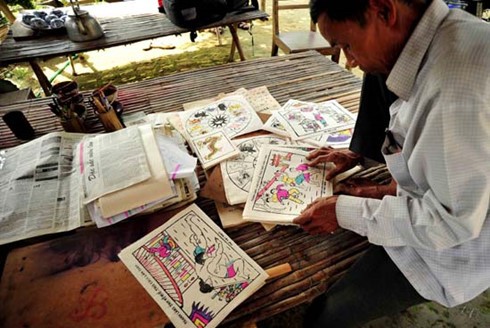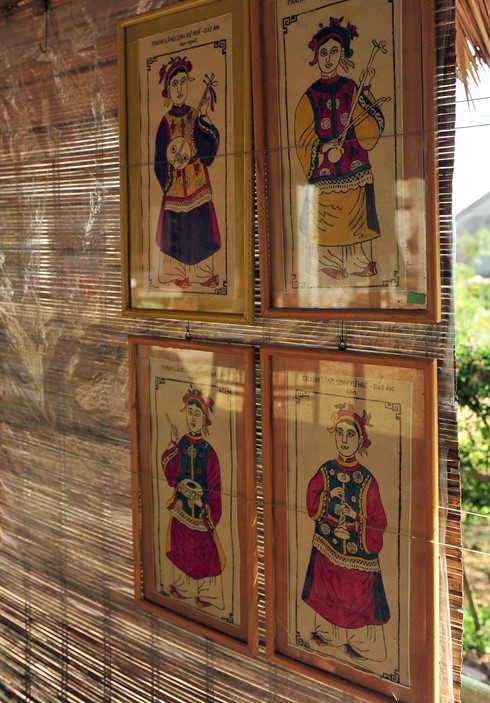Folk paintings of Sinh village
Lan Anh -
(VOVworld) – If Hanoi is famous for Hang Trong folk paintings and the northern delta has Dong Ho paintings, the central province of Thua Thien Hue boasts paintings of Sinh village. The woodblock printed paintings have been associated the spiritual life of locals for generations.
 |
| Sinh village paintings (Photo by Le Huy Hoang Hai/vov.vn) |
Sinh or Lai An village is located in Phu Vang district, 9km east of Hue city. If Dong Ho folk paintings reflect the down-to-earth daily life of northern delta residents, Sinh village paintings are used for belief and worship purposes. Nguyen Van Tien, a local in Thua Thien Hue, said: “We buy Sinh village paintings to practise our belief and religion. The paintings are hung at the altar. The people find in the paintings the peace of mind and another world which is in harmony with their real life.”
Sinh village paintings are divided into 3 topics: characters, objects, and animals. Characters can be dummies and protectors of owners. This type of paintings are hung on the wall and burnt when the year ends. The rest are burnt together with votive papers after a praying ritual. Objects can be clothes as offerings to Gods and bow and arrows. Animals are those of the 12 zodiac representing the ages of the owners and buffaloes, cows, pigs, and horses which are believed to protect the raised cattle from illness. Paintings of tigers and elephants are worshipped in the shrines to pray for protection of human being. Folk painting collector Nguyen Thi Thu Hoa said: "Sinh village paintings are actually offered to save the owners’ lives. People in the central region have a custom of offering dummies as substitutes for them so that they can be safe. Sinh village paintings reflect the Vietnamese’s indigenousness. When people resettle in a harsh land without the help of science and technology, they lay their beliefs into Gods.”
 |
Sinh village paintings are similar to others in terms of techniques and materials. Patterns are printed onto Do paper from woodblocks and color. The color ink is made from natural materials. The paintings are drawn with brushes made from the roots of pineapple trees. Artisan Nguyen Huu Phuoc said: “The most difficult step is to create colors. Sinh village paintings are characterized by 5 colors which should be painted separately. When one color is dried, it’s time to add another color. The other 2 steps are to trim paper and print painting. So after a total of 7 steps are taken, the painting is finished.”
Lan Anh